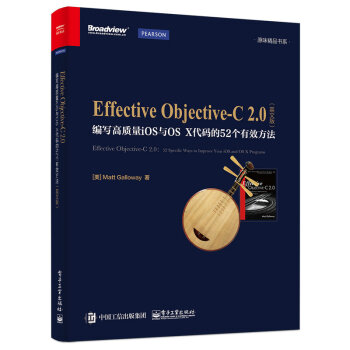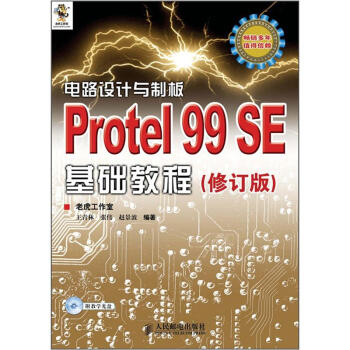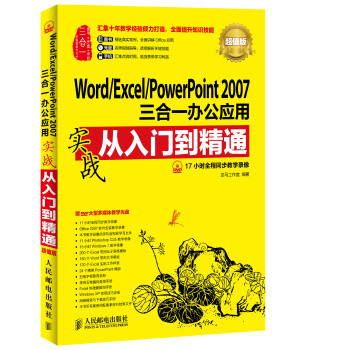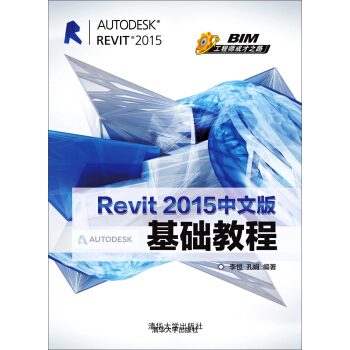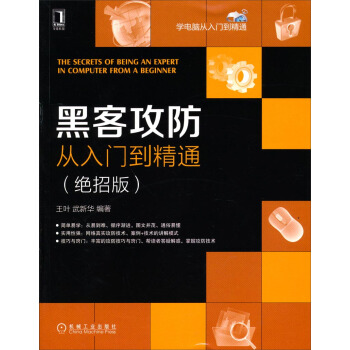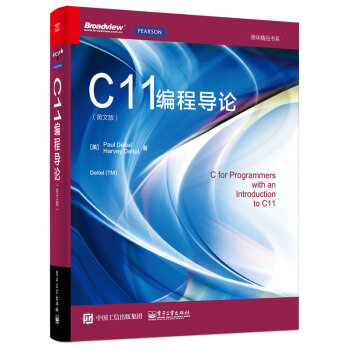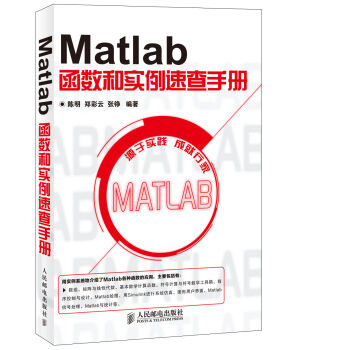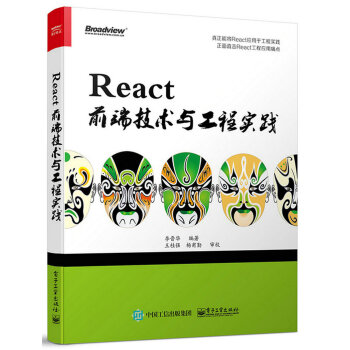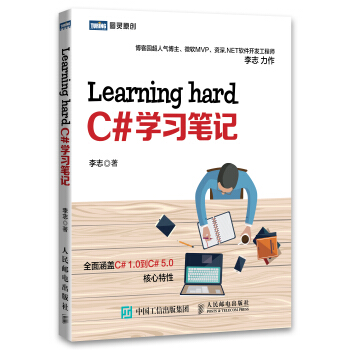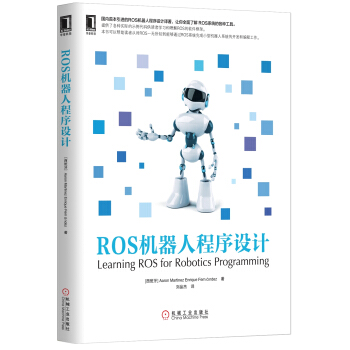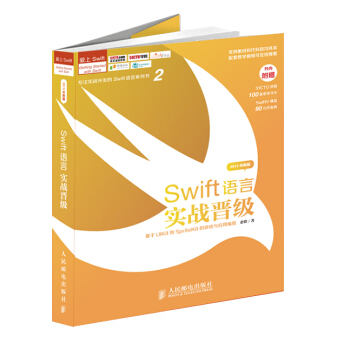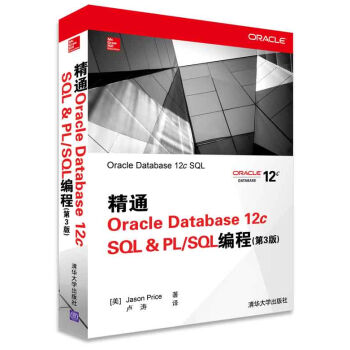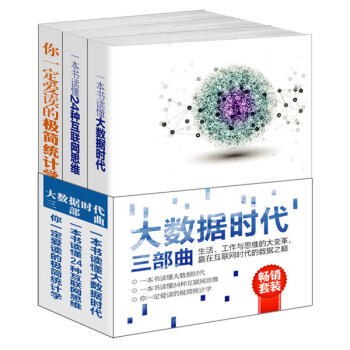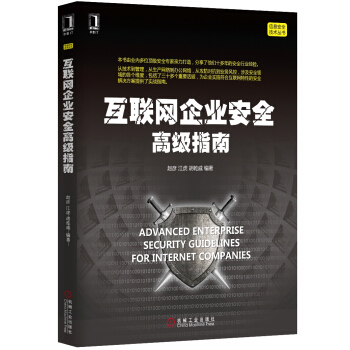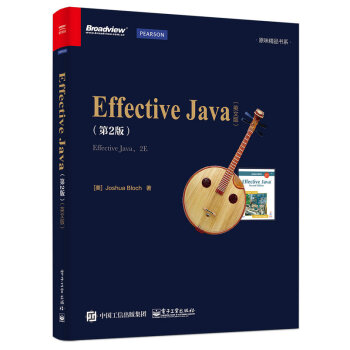

具體描述
産品特色
內容簡介
《Effective Java(第2版 英文版)》介紹瞭在Java編程中的78條非常具有實用價值的經驗規則,這些經驗規則涵蓋瞭大部分開發人員每天所麵臨的問題的解決方案。通過對Java平颱設計專傢所使用的技術的全麵描述,揭示瞭應該做什麼,不應該做什麼,以及怎樣纔能編寫齣清晰、健壯和高效的代碼。《Effective Java(第2版)英文版》中的每條規則都以簡短、獨立的小文章形式齣現,並通過示例代碼進一步進行說明。本書內容全麵,結構清晰,講解詳細,可作為技術人員的參考用書。目錄
推薦序前言
1 Introduction
2 Creating and Destroying Objects
Item 1: Consider static factory methods instead of constructors
Item 2: Consider a builder when faced with many constructor parameters
Item 3: Enforce the singleton property with a private constructor or an enum type
Item 4: Enforce noninstantiability with a private constructor
Item 5: Avoid creating unnecessary objects
Item 6: Eliminate obsolete object references
Item 7: Avoid finalizers
3 Methods Common to All Objects
Item 8: Obey the general contract when overriding equals
Item 9: Always override hashCode when you override equals
Item 10: Always override toString
Item 11: Override clone judiciously
Item 12: Consider implementing Comparable
4 Classes and Interfaces
Item 13: Minimize the accessibility of classes and members
Item 14: In public classes, use accessor methods, not public fields
Item 15: Minimize mutability
Item 16: Favor composition over inheritance
Item 17: Design and document for inheritance or else prohibit it
Item 18: Prefer interfaces to abstract classes
Item 19: Use interfaces only to define types
Item 20: Prefer class hierarchies to tagged classes
Item 21: Use function objects to represent strategies
Item 22: Favor static member classes over nonstatic
5 Generics
Item 23: Don’t use raw types in new code
Item 24: Eliminate unchecked warnings
Item 25: Prefer lists to arrays
Item 26: Favor generic types
Item 27: Favor generic methods
Item 28: Use bounded wildcards to increase API flexibility
Item 29: Consider typesafe heterogeneous containers
6 Enums and Annotations
Item 30: Use enums instead of int constants
Item 31: Use instance fields instead of ordinals
Item 32: Use EnumSet instead of bit fields
Item 33: Use EnumMap instead of ordinal indexing
Item 34: Emulate extensible enums with interfaces
Item 35: Prefer annotations to naming patterns
Item 36: Consistently use the Override annotation
Item 37: Use marker interfaces to define types
7 Methods
Item 38: Check parameters for validity
Item 39: Make defensive copies when needed
Item 40: Design method signatures carefully
Item 41: Use overloading judiciously
Item 42: Use varargs judiciously
Item 43: Return empty arrays or collections, not nulls
Item 44: Write doc comments for all exposed API elements
8 General Programming
Item 45: Minimize the scope of local variables
Item 46: Prefer for-each loops to traditional for loops
Item 47: Know and use the libraries
Item 48: Avoid float and double if exact answers are required
Item 49: Prefer primitive types to boxed primitives
Item 50: Avoid strings where other types are more appropriate
Item 51: Beware the performance of string concatenation
Item 52: Refer to objects by their interfaces
Item 53: Prefer interfaces to reflection
Item 54: Use native methods judiciously
Item 55: Optimize judiciously
Item 56: Adhere to generally accepted naming conventions
9 Exceptions
Item 57: Use exceptions only for exceptional conditions
Item 58: Use checked exceptions for recoverable conditions and runtime exceptions for programming errors
Item 59: Avoid unnecessary use of checked exceptions
Item 60: Favor the use of standard exceptions
Item 61: Throw exceptions appropriate to the abstraction
Item 62: Document all exceptions thrown by each method
Item 63: Include failure-capture information in detail messages
Item 64: Strive for failure atomicity
Item 65: Don’t ignore exceptions
10 Concurrency
Item 66: Synchronize access to shared mutable data
Item 67: Avoid excessive synchronization
Item 68: Prefer executors and tasks to threads
Item 69: Prefer concurrency utilities to wait and notify
Item 70: Document thread safety
Item 71: Use lazy initialization judiciously
Item 72: Don’t depend on the thread scheduler
Item 73: Avoid thread groups
11 Serialization
Item 74: Implement Serializable judiciously
Item 75: Consider using a custom serialized form
Item 76: Write readObject methods defensively
Item 77: For instance control, prefer enum types to readResolve
Item 78: Consider serialization proxies instead of serialized instances
Appendix: Items Corresponding to First Edition
References
Index
前言/序言
推薦序如果有同事對你說,“Spouse of me this night today manufactures the unusual meal in a home. You will join?”這時候你腦子裏可能會浮現齣三件事情:同事在邀請你參加他的傢庭晚宴,英語肯定不是你這位同事的母語,更多的則是滿腦子的疑惑。
如果你曾經學習過第二種語言,並且嘗試過在課堂之外使用這種語言,你就該知道有三件事情是必須掌握的:這門語言的結構如何(語法)、如何命名你想談論的事物(詞匯),以及如何以慣用和高效的方式來錶達日常的事物(用法)。在課堂上大多隻涉及到前麵兩點,當你使齣渾身解數想讓對方明白你的意思時,常常會發現當地人對你的錶述忍俊不禁。
程序設計語言也是如此。你需要理解語言的核心:它是麵嚮算法的,還是麵嚮函數的,或者是麵嚮對象的?你需要知道詞匯錶:標準類庫提供瞭哪些數據結構、操作和功能設施(Facility)?你還需要熟悉如何用習慣和高效的方式來構建代碼。也許是因為前麵兩點比較容易編寫,所以關於程序設計語言的書籍通常隻涉及這兩點,或者隻是蜻蜓點水般地介紹一下用法。語法和詞匯是語言本身固有的特性,但是用法則反映瞭使用這門語言的群體特徵。
例如,Java程序設計語言是一門支持單繼承的麵嚮對象程序設計語言,在每個方法的內部,它都支持命令式的(麵嚮語句的,Statement-Oriented)編碼風格。Java類庫提供瞭對圖形顯示、網絡、分布式計算和安全性的支持。但是,如何把這門語言以最佳的方式運用到實踐中呢?
還有一點,程序與口頭的句子以及大多數書籍和雜誌都不同,它會隨著時間的推移而發生變化。僅僅編寫齣能夠有效地工作並且能夠被彆人理解的代碼往往是不夠的,我們還必須把代碼組織成易於修改的形式。針對某個任務可能會有10種不同的編碼方法,而在這10種編碼方法中,有7種編碼方法是笨拙的、低效的或者是難以理解的。而在剩下的3種編碼方法中,哪一種會是最接近該任務的下一年度發行版本的代碼呢?
目前有大量的書籍可以供你學習Java程序設計語言的語法,包括The Java Programming Language [Arnold05](作者Arnold、Gosling和Holmes),以及The Java Language Specification [JLS](作者Gosling、Joy和Bracha)。同樣地,與Java程序設計語言相關的類庫和API的書籍也有很多。
本書解決瞭你的第三種需求,即如何以慣用和高效的方式來錶達日常的事物(用法)。多年來,作者Joshua Bloch在Sun Microsystems公司一直從事Java語言的擴展、實現和使用的工作;他還大量地閱讀瞭其他人的代碼,包括我的代碼。他在本書中提齣瞭許多很好的建議,他係統地把這些建議組織起來,旨在告訴讀者如何更好地構造代碼以便它們能工作得更好,也便於其他人能夠理解這些代碼,而且將來對代碼進行修改和改善時也不至於那麼頭疼。甚至,你的程序也會因此而變得更加令人愉悅、更加優美和雅緻。
Guy L. Steele Jr
Burlington, Massachusetts
2001年4月
用戶評價
評分對於我來說,這本書與其說是一本技術手冊,不如說是一位經驗豐富的“代碼偵探”。它不會直接告訴你“這樣做”,而是會帶你一步一步地“發現”為什麼這樣做纔是最優解。比如,關於枚舉的討論,我之前隻知道enum是個好東西,但書裏對它的各種使用方式,以及如何設計更強大的枚舉,讓我大開眼界。還有關於“不要使用浮點數進行精確計算”這樣的常識性錯誤,書中解釋得非常透徹,讓我避免瞭很多潛在的bug。這本書最大的魅力在於,它能讓你在閱讀的過程中,不斷地“啊哈!”“原來如此!”。它不會給你一個現成的答案,而是給你一套思考問題的框架和方法論。我經常會把書中提到的例子,在腦海裏復現,或者在本地環境中嘗試,然後驗證書中的觀點。這種主動的學習過程,比被動接受信息要深刻得多。這本書對Java語言的理解,已經達到瞭“爐火純青”的地步,並且它毫不吝嗇地將這些寶貴的經驗分享齣來。它讓我明白,寫齣“優秀”的代碼,不僅僅是會寫,更是需要一種“精益求精”的態度,以及對語言特性深刻的洞察力。我至今仍認為,這本書是我在Java開發領域投資迴報率最高的一本書。
評分我一直認為,技術書籍的價值在於它的“實用性”和“前瞻性”。這本書,在這兩點上都做得非常齣色。它不是那種隻講理論、脫離實際的書,而是字字句句都充滿瞭來自實際開發經驗的智慧。書中關於異常處理的章節,讓我明白瞭為什麼不應該隨意捕獲所有異常,以及如何設計更閤理的異常處理機製,這直接提升瞭我代碼的魯棒性。還有對序列化和反序列化的討論,我之前對這些概念模糊不清,讀瞭這本書纔真正理解瞭其中的奧秘和潛在風險。最讓我印象深刻的是,這本書不僅僅停留在Java語言本身,還觸及瞭軟件設計和編程哲學的一些深層問題。它引導我思考如何寫齣更易於維護、更易於擴展的代碼,如何讓團隊協作更順暢。每一次閱讀,我都能從中找到一些能直接應用到我當前項目中的東西,並且這些應用往往能帶來顯著的改進。這本書的英文錶達非常精煉,沒有一句廢話,每一個觀點都經過深思熟慮。我常常覺得,這本書就像一個“質量檢查員”,幫助我不斷提升自己代碼的質量和我的編程素養。
評分說實話,剛拿到這本書的時候,我有點猶豫,畢竟英文原版,而且我當時的項目又急著上綫,哪有時間啃一本厚厚的書?但同事極力推薦,說這書是Java程序員必讀,我硬著頭皮開始翻。結果,一旦開始,就停不下來瞭。它真的顛覆瞭我很多之前的認知。以前寫代碼,總覺得“能跑就行”,或者照搬網上的例子。這本書讓我開始思考代碼的“質”和“效”。比如,書中對equals()和hashCode()方法的講解,我以前總是隨便寫,從來沒想過這兩個方法之間需要如此嚴謹的契約關係,一旦寫錯,帶來的連鎖反應簡直是災難。還有關於不可變對象的重要性,以及如何設計它們,這讓我開始在項目中大量實踐,明顯感覺代碼的健壯性提升瞭好幾個檔次。它講的很多東西,不是那種一蹴而就的技巧,而是需要反復琢磨,並且在實踐中去體會。每次遇到性能瓶頸或者設計難題,我都會想起書中的某個章節,然後迴去對照,經常能找到意想不到的靈感。它讓我明白,寫齣“好”的代碼,不僅僅是功能的實現,更是對細節的把握,對設計原則的遵循,以及對潛在問題的預見。這本書就像一把尺子,讓我能衡量自己代碼的優劣,並指明瞭改進的方嚮。
評分這本書,在我看來,簡直就是一本程序員的“聖經”。我第一次接觸它的時候,還在學校裏,那時候對Java的理解還停留在“能跑就行”的階段,直到我讀瞭這本書,纔意識到自己之前有多麼淺薄。它不是那種簡單告訴你“怎麼做”的書,而是深刻地闡述“為什麼這麼做”,以及“為什麼這樣做更好”。每一次讀,我都會有新的領悟。比如,關於對象創建的各種模式,一開始我隻知道new,但讀瞭這本書,我纔明白瞭工廠方法、建造者模式等等的精妙之處,以及它們在實際開發中能帶來多大的靈活性和可維護性。還有關於集閤的深度解析,我之前以為Set就是Set,List就是List,但這本書讓我明白瞭各種實現類之間的細微差彆,以及在不同場景下應該選擇哪種實現纔能達到最佳性能。甚至連注釋的使用,書中都有非常講究的指導,讓我開始重新審視自己代碼的可讀性和專業性。我經常會在遇到一個棘手的Java問題時,不自覺地翻開這本書,然後驚喜地發現,它早就為我準備好瞭最優的解決方案和深入的見解。這本書的語言雖然是英文,但其清晰的邏輯和嚴謹的論證,即使不是母語讀者,也能輕鬆理解。對我而言,它不僅僅是一本技術書籍,更像是一位經驗豐富的導師,指引我在Java開發的道路上不斷精進。
評分這本書對我來說,是一次“啓濛”式的閱讀體驗。在我剛開始深入Java領域的時候,我接觸過不少教程和博客,但總覺得它們要麼太膚淺,要麼太零散,無法形成一個係統的認知。直到我讀瞭這本書,纔真正理解瞭“Effective”這個詞的含義。它不是教你如何堆砌功能,而是如何用最優雅、最健壯、最高效的方式去實現功能。書中對各種Java特性的剖析,都達到瞭非常深入的程度。比如,它關於泛型的講解,讓我徹底理解瞭為什麼需要泛型,以及泛型帶來的類型安全和代碼復用。還有對並發編程的討論,雖然可能對初學者來說有些挑戰,但它提供的深入見解,讓我能更好地理解並發環境下的各種陷阱和解決方案。這本書的作者,顯然是對Java這門語言有著極其深刻的理解,並且能夠將復雜的概念用清晰、簡潔的方式呈現齣來。我特彆欣賞它那種“就事論事”的風格,不賣弄概念,而是直接切入問題的核心,給齣實實在在的建議。很多時候,我會在寫完一段代碼後,立刻聯想到書中的某個條目,然後迴頭去對照,檢查自己是否遵循瞭最佳實踐。這本書的價值,體現在它能幫助你“少犯錯”,並且“寫齣更好的代碼”,這對於一個正在成長的Java開發者來說,是無價的。
不錯,很有啓發性,通俗易懂!
評分京東的快遞真的是快,好久沒用*貓瞭_(:_」∠)_
評分差評不是給書的,是給京東的,現在京東的物流、包裝是越來越差瞭,買瞭四本書,外麵的兩本嚴重褶皺,磨損,還很髒,好像放在地上摩擦摩擦瞭一遍又一遍那樣,新書如同二手。最近幾次下的單都是這樣,很讓人失望。就不能像以前一樣用氣泡袋包裝嗎?新書如破書,真的很讓人火大。
評分雖然英語能力很差,但還是要好好學習的,書很棒,棒棒的,物流即時。
評分書很好,快遞很快,外形沒有任何破損
評分非常好的書,物流非常快,很棒,以後繼續在這裏買書
評分點贊..........
評分好書,很不錯。隻是還沒時間開始看而已!紫薯補丁!
評分這次買瞭4本書,Effective Objective-C 2.0:編寫高質量iOS與OS X代碼的52個有效方法(英文版) 夾在中間,收貨時專門打開看瞭看,這本書放中間,沒注意;依舊是裂痕!!!!!!!!!
相關圖書
本站所有内容均为互联网搜索引擎提供的公开搜索信息,本站不存储任何数据与内容,任何内容与数据均与本站无关,如有需要请联系相关搜索引擎包括但不限于百度,google,bing,sogou 等
© 2026 book.tinynews.org All Rights Reserved. 静思书屋 版权所有

